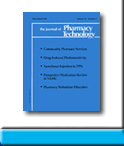 |
 |
INFECTIOUS
VULVOVAGINITIS: CURRENT TRENDS AND MANAGEMENT
Charles D
Ponte
To request full article click here.
OBJECTIVE: To review the clinical presentation, diagnosis, and contemporary management of infectious vulvovaginitis.
DATA SOURCES: A MEDLINE search on English-language literature was performed, with emphasis on 1999 publications. Search terms included trichomoniasis, candida vaginitis, and bacterial vaginosis (BV). Personal files containing relevant published reviews and original research were also reviewed.
RESULTS: Vulvovaginitis is a common gynecologic disorder. The three most prevalent types of infectious vulvovaginitis are BV, candidiasis, and trichomoniasis. Patients typically report discharge, odor, itching, dysuria, or dyspareunia. The healthy vagina is resistant to pathogenic organisms due to an acidic pH and the production of hydrogen peroxide. Any disruption of the healthy vaginal ecosystem can result in infection. Candidiasis is an opportunistic infection that can be sexually transmitted and is diagnosed by presence of fungal hyphae or pseudohyphae in vaginal secretions. Treatment is usually initiated with topical imidazoles or triazoles, which are highly effective against Candida albicans; however, drug-resistant nonalbicans species (e.g., Candida glabrata) are becoming more prevalent and pose treatment challenges. Trichomoniasis is a sexually transmitted disease caused by Trichomonas vaginalis, a protozoan that invades the paraurethral structures of both sexes and is diagnosed by presence of motile trichomonads in vaginal secretions. Oral metronidazole is the only drug recommended for treatment; however, the incidence of metronidazole-resistant trichomoniasis is increasing and poses therapeutic challenges for the clinician. BV is characterized by an overgrowth of aerobic and anaerobic organisms that replace normal lactobacilli. Amsel's criteria are useful in making the diagnosis of BV. Effective treatment is necessary since BV is associated with various gynecologic and obstetric complications. Recommended therapies include oral or topical metronidazole or clindamycin.
CONCLUSIONS: Patient history and physical examination findings are paramount in diagnosing infectious vulvovaginitis. Despite effective oral and topical treatments, resistant organisms are becoming more prevalent, necessitating a search for more effective management of this disorder.
J Pharm Technol 2000;16:92-7.
To order the complete CE article click here.
To request full article click here.
|
|
|
||
|

